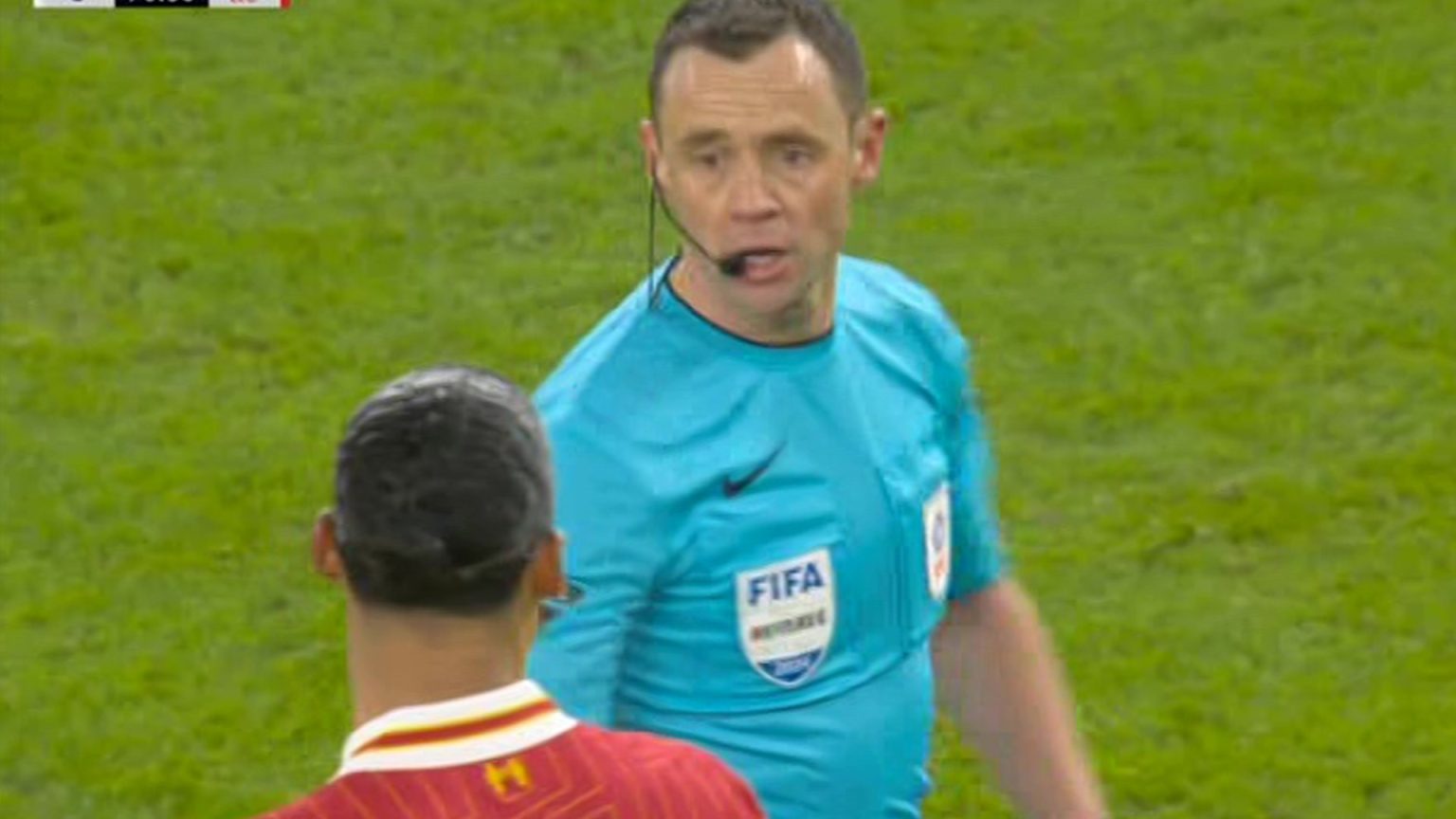The Carabao Cup semi-final clash between Tottenham Hotspur and Liverpool marked a watershed moment in football history, witnessing the first-ever instance of a referee directly addressing the crowd to explain the rationale behind a disallowed goal. Referee Stuart Attwell, utilizing the stadium’s public address system, clarified to the captivated audience that Dominic Solanke’s apparent opening goal for Spurs had been ruled out due to an offside infringement. This unprecedented move came after a VAR review of the play, where Solanke had seemingly latched onto a through-ball from Pedro Porro and slotted it past the Liverpool goalkeeper. Attwell’s announcement, “After a review, Dominic Solanke was in an offside position,” brought an end to the momentary jubilation of the Spurs faithful.
The innovative use of the PA system by Attwell stemmed from an ongoing trial aiming to enhance transparency and understanding of VAR decisions. This groundbreaking approach garnered widespread praise from fans, many of whom viewed it as a significant step forward in the often-controversial realm of video-assisted refereeing. The clarity provided by Attwell’s explanation resonated with supporters, contrasting starkly with the often opaque and frustrating nature of VAR interventions. Many took to social media to express their approval, hailing the move as a “brilliant addition to the game” and a much-needed improvement to the matchday experience. The NFL-style explanation, as some dubbed it, resonated positively with fans accustomed to such practices in American sports.
Despite the historical significance of the referee’s announcement, the match itself was filled with drama and incident. Though Solanke’s early effort was chalked off, he later played a pivotal role in Tottenham’s eventual victory, assisting Lucas Bergvall’s 86th-minute winner. This late goal sparked controversy, however, as Bergvall had narrowly avoided receiving a second yellow card moments earlier for a challenge on Liverpool’s Kostas Tsimikas. The incident fueled debate amongst fans and pundits, adding another layer of complexity to an already eventful encounter.
Overshadowing the on-field drama was a serious injury to Tottenham midfielder Rodrigo Bentancur. A horrific landing early in the match led to Bentancur being stretchered off and taken to hospital. The extent of his injury remained uncertain, casting a somber shadow over the proceedings. While updates later confirmed that Bentancur was conscious, the incident served as a stark reminder of the physical risks inherent in the sport.
The confluence of these events – the historic referee announcement, the late winning goal, the surrounding controversy, and the serious injury – made for a memorable and emotionally charged match. While the outcome on the pitch ultimately determined the victor, the broader implications of Attwell’s decision to address the crowd directly resonated far beyond the final whistle. The positive reception to this unprecedented move has fueled calls for its wider implementation, potentially revolutionizing the way VAR decisions are communicated and understood within the game.
The success of this trial could pave the way for a more transparent and engaging matchday experience for fans. The ability to hear the referee’s explanation directly, rather than relying on often-delayed and cryptic broadcast information, empowers fans with a deeper understanding of the decision-making process. This, in turn, could lead to greater acceptance of VAR, which has often been met with skepticism and frustration. The trial’s positive reception suggests a potential shift in the relationship between fans, referees, and technology within the game.
The long-term impact of this innovation remains to be seen, but the Tottenham-Liverpool semi-final undoubtedly marked a pivotal moment in football history. The referee’s decision to address the crowd directly, coupled with the other dramatic events of the match, has sparked a conversation about the future of officiating and the role of technology in enhancing the fan experience. The overwhelmingly positive response suggests that this trial could represent a significant step towards a more transparent and engaging future for the sport.











